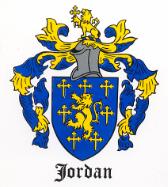The DNA testing is as easy as brushing your teeth -- no blood, no doctors, no visits to collection specialists. Your genetic test kit consists of two cheek scrapers and a two collection vials. You will be able to read the instructions and perform a painless cheek scraping in about five minutes. The effect of using the scraper is about the same as brushing your cheek with a soft bristle toothbrush.
You don't go anywhere. Family Tree DNA mails the kit to you and you mail it back to them. The kit is a padded envelop that contains two swabs that look like little tooth brushes. You brush the inside of your cheek with one swab, then do the same with the other at least eight hours later. The swabs have nice handles that allow you to push the soft ends off into small vials of soapy water. The vials have caps that keep the swab tips wet and sealed while they travel to Houston in the envelope.
Most people spend far more money and time doing a single piece of research that results in far less discovery than you will get from this DNA test.
Worried about what else the DNA test lab might find? The answer is not a thing. They won't know if you show positive for a disease, condition or anything else. The test looks only at the Y Chromosome and then only at 12, 25 or 37 specific Loci on the Y Chromosome (you select the number).
The Jordan Surname DNA Project Adminstrators recommend that you take the 25 marker test.
The results are your private information unless you want us to publish the results under a privacy ID on this website.
The DNA Test
FamilyTreeDNA, through the use of its testing lab at the University of Arizona, tests 12, 25 or 37 allele (markers on the DNA chain). These allele are sometimes referred to as loci or markers. They are also called DYS where DYS = (DNA)+(Y-chromosome)+(Segment).
The 12 marker test determines 12 DYS allele: 393, 390, 19, 391, 385a, 385b, 426, 388, 439, 389-1, 392 and 389-2. A computer is used to read the DNA scans. It measures the size of the allele result and assigns a weighted number to it. The individual values in each of the cells have no special significance. What matters is the similarity of the pattern of numbers found in one row compared to other rows. These are the numbers that are compared between individuals being tested. If, for instance, the DYS 393 allele result is off by one between two individuals and all the other numbers are equal, then it is called an 11/12 match. It means that the two individuals are related but the Most Recent Common Ancestor (MRCA) is further back in time, beyond 14.5 generations, or a random mutation may have occurred.
The DYS numbering scheme (e.g. DYS390, DYS393) for the Y-STR haplotype loci is controlled and administered by an international standards body called HUGO Human Gene Nomenclature Committee based at University College, London.
Where known and made available by the laboratory, the DYS identification number for a particular locus is listed. In these cases, the total number of "repeats" is shown. For certain locus, Dr. Hammer of the University of Arizona has not released the exact DYS number and the reported values for those particular locus are "scores," a normalized number, instead of the measured number of "repeats" representing a particular allele at that loci. The particular set of an individual's STR repeat values is considered to be the "haplotype" for that person.
There are some unique charasteristics of markers 9 (DYS #439), 10 (DYS #389-1) and 12 (DYS #389-2). About 25% of the mutations in these 12 markers take place in marker #9...thus indicating a faster mutation rate than most of the others. Therefore, if you find a mismatch on marker #9 between 2 participants, and all other markers match, then you have a very good likelihood of a connection and can probably discount the mismatch of marker #9 in your analysis. Your conclusions may also be strengthened by good research and documentation if it indicates possible relationships between the two participants.
The unique characteristics of markers #10 and #12 have to do with the manner in which scientists code these two markers. Marker #12 is the sum total of the scores for both markers #10 and #12. You will find that in most instances, marker #10 will be scored at 13 and marker #12 at 16. If there is a 1 point increase in marker #10 (from 13 to 14), it results in a corresponding increase in marker #12 (from 29 to 30), when in fact the actual score for marker #12 never changed...only its cumulative total. In this instance, the increase in marker #12 should not be counted in your analysis as a change. If, however, marker #10 is the same for you and another participant, but there is a one point increase in marker #12 for either of you, then marker #12 is considered as a mismatch.

